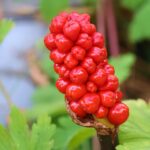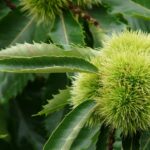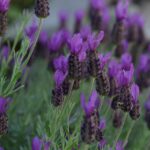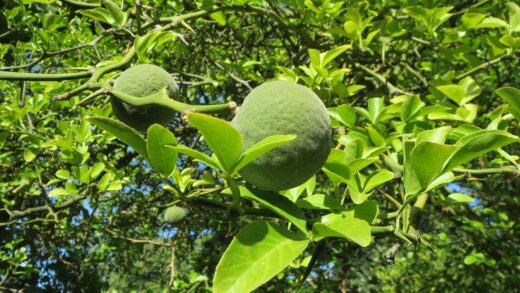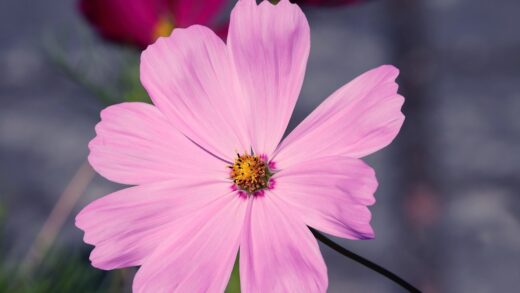The Chinese juniper is a hardy evergreen, well-adapted to withstand the challenges of cold winter climates, but proper preparation and care can significantly enhance its ability to emerge in spring healthy and undamaged. The process of wintering involves taking proactive steps in the autumn to mitigate the primary winter threats: root damage from freezing temperatures, foliage desiccation from wind and sun, and physical damage from the weight of snow and ice. While established junipers are remarkably resilient, young or newly planted specimens, as well as those grown in containers or exposed locations, require more diligent attention. Understanding these risks and implementing appropriate protective measures ensures the plant’s survival and preserves its ornamental qualities through the dormant season.
A crucial aspect of winter preparedness for Chinese junipers is ensuring the plant enters the dormant season fully hydrated. Evergreens continue to lose moisture through their needles throughout the winter via transpiration, and if the ground is frozen, the roots cannot absorb water to replace this loss. This condition, known as winter burn or desiccation, results in brown, dead foliage, particularly on the side of the plant exposed to the prevailing winter winds and sun. To combat this, it is essential to provide deep, thorough watering in the late autumn, after the plant has become dormant but before the ground freezes solid. This ensures the soil reservoir is charged with moisture that the roots can access during brief winter thaws.
The root system of the Chinese juniper, while cold hardy, can benefit from the insulating effects of a proper mulch layer. Applying a two- to three-inch layer of organic mulch, such as wood chips or shredded bark, over the root zone in the fall helps to moderate soil temperature fluctuations. This insulation protects the roots from the damage caused by rapid freezing and thawing cycles and helps to conserve the moisture provided by late-season watering. It is important to keep the mulch a few inches away from the base of the trunk to prevent moisture from accumulating against the bark, which could lead to rot and provide a haven for rodents.
Young or recently transplanted Chinese junipers are more susceptible to winter damage than their well-established counterparts because their root systems are less extensive. For these vulnerable plants, providing additional protection for the first one or two winters can be highly beneficial. This might include creating a temporary windbreak on the windward side of the plant using burlap stretched between stakes. This shield helps to reduce the desiccating effect of harsh winter winds, which is a primary cause of winter burn. It is important that the burlap does not directly touch the foliage, as this can trap moisture and cause its own set of problems.
Preparing the plant for winter
The preparation for winter begins well before the first snowfall, with the cessation of activities that promote new growth. Fertilizing should be avoided after mid-summer, as a late-season application of nitrogen can stimulate a flush of tender new growth that will not have time to harden off before the first frost. This succulent growth is extremely vulnerable to freezing temperatures and will be killed back during the winter, causing aesthetic damage and wasting the plant’s energy reserves. Similarly, any heavy pruning should be completed before late summer to allow the plant adequate time to heal and prepare for dormancy.
More articles on this topic
A thorough inspection of the plant in the fall is a key preparatory step. Look for and prune out any dead, broken, or diseased branches. This sanitation practice removes potential entry points for diseases and eliminates weak branches that are more likely to break under the weight of snow or ice. This is also a good time to check for any signs of pest infestations, such as bagworm cases or scale insects, which can be more easily spotted after some of the surrounding deciduous foliage has dropped. Removing these pests in the fall reduces the overwintering population and prevents a larger problem from emerging in the spring.
For upright, columnar, or multi-stemmed juniper cultivars, the weight of heavy, wet snow or ice can pose a significant threat, causing the branches to splay open, bend, or even break. To prevent this type of structural damage, it is advisable to provide support before the first major winter storm. This can be accomplished by loosely wrapping the plant with soft twine, burlap strips, or specially designed plant netting. Start at the bottom and spiral upward, gently pulling the branches inward towards the central leader to create a more compact and resilient form. This wrapping should be snug enough to provide support but not so tight that it damages the branches or restricts air circulation.
Another important aspect of preparation involves managing the plant’s immediate surroundings. In the fall, ensure that the area around the base of the juniper is clear of fallen leaves and other debris. This debris can harbor fungal spores and provide a warm, sheltered environment for pests and rodents, such as voles and mice, which may gnaw on the bark at the base of the trunk during the winter, a damaging activity known as girdling. A clean area around the plant discourages these pests and also promotes better air circulation, reducing the risk of disease.
Protective measures against frost and wind
Protection from harsh winter winds is one of the most effective measures to prevent winter burn on Chinese junipers. This is especially critical for plants in exposed, windy locations or for newly planted specimens that are not yet fully established. Constructing a simple windbreak can make a significant difference. This is typically done by driving stakes into the ground on the windward side of the plant (usually the north or northwest) and stretching a length of burlap or snow fencing between them. The barrier should be tall enough to protect the bulk of the plant but positioned far enough away that it does not rub against the foliage.
More articles on this topic
For smaller or more sensitive juniper varieties, a complete enclosure might be considered. This can be created by driving four stakes into the ground to form a square around the plant and then wrapping burlap around the stakes on all sides, leaving the top open to allow for some air circulation and light penetration. This creates a sheltered microclimate around the plant, protecting it from both wind and direct winter sun. It is important to avoid using plastic wraps, as they do not breathe and can trap heat on sunny days, leading to a “greenhouse effect” that can damage the plant. The enclosure should be put in place in late fall and removed promptly in early spring as temperatures begin to rise.
Anti-desiccant sprays, also known as anti-transpirant sprays, are another tool that can be used to protect juniper foliage from winter desiccation. These products are typically made from a waxy substance that is mixed with water and sprayed directly onto the foliage. The spray forms a thin, protective, semi-permeable film over the needles that reduces the amount of moisture lost through transpiration. For best results, anti-desiccants should be applied in late fall when temperatures are above freezing, typically in November or early December, allowing the coating to set properly before the onset of harsh winter weather. A second application may be necessary mid-winter during a thaw if the winter is particularly long or harsh.
Container-grown Chinese junipers face a greater risk from freezing temperatures because their roots are not insulated by the large thermal mass of the earth. The soil in a pot can freeze solid much more quickly and to a colder temperature than the ground, which can kill the roots. To protect containerized junipers, the pot should either be moved to a sheltered but unheated location, such as a garage, shed, or cold frame, for the winter. Alternatively, the pot can be “heeled in” by burying it in the ground in a vacant part of the garden, or it can be placed in a larger container and insulated by packing materials like straw, leaves, or bubble wrap in the space between the two pots.
Post-winter care and recovery
As winter recedes and spring approaches, it is important to remove any protective coverings in a timely manner. Wraps, burlap screens, and other winter protection should be taken down as soon as the threat of severe, cold, drying winds has passed. Leaving these protections on for too long into the spring can inhibit new growth, trap excessive moisture, and create a favorable environment for fungal diseases as temperatures warm. The ideal time for removal is typically on an overcast, calm day to allow the plant to gradually re-acclimate to the full sun and wind exposure.
Once the snow has melted and the ground is no longer frozen, a thorough inspection of the juniper is in order. Check for any branches that have been broken or damaged by snow, ice, or wind over the winter. These should be pruned off promptly using clean, sharp pruning tools, making the cut back to the nearest healthy lateral branch or the main trunk. This not only improves the plant’s appearance but also removes potential entry points for pests and diseases. Also, assess the extent of any winter burn that may have occurred; the foliage may appear brown, reddish, or bleached.
It is important to be patient when assessing winter burn damage. Often, foliage that appears dead or damaged in early spring may still have viable buds that will push out new growth as the weather warms. Avoid the urge to immediately prune off all the brown foliage. It is best to wait until late spring, after the new growth has fully emerged, to make a final determination of what is truly dead and what will recover. Once the extent of the dieback is clear, any dead branch tips can be carefully trimmed back to live, green growth.
After the harsh conditions of winter, a juniper can benefit from some restorative care to encourage a strong start to the growing season. Once the soil is workable, check the condition of the mulch layer. Rake away any matted mulch to improve air circulation and consider replenishing it with a fresh layer to help conserve spring moisture and suppress weeds. If the plant has experienced significant stress or damage, a light application of a balanced, slow-release fertilizer in early spring can provide the necessary nutrients to support recovery and fuel new growth. Resume a regular watering schedule for young plants as they break dormancy and enter their active growth phase.








